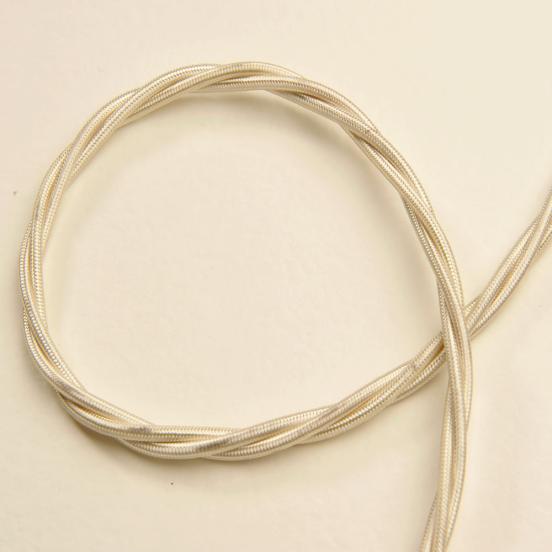
The re-wiring of lighting, whether ceiling lights, table or standard lamps, is never complete without the use of authentic fabric covered electrical cable. This is an important finishing touch for antique or vintage lamps during restoration or in period interiors where modern plastic cable just jars the eye. Disguised under the fabric covering is modern cable provided with an earth where this is required. The earth cable can be unwound and discarded if it is not needed. Priced per metre but fractions may be purchased.
History
Modern cables use high-tech plastics as insulating coatings. Many, for domestic, relatively low voltage use, in fact have two different plastic layers as ours does under the fabric outer covering. Multiple layers is not new, however. Many different materials have been used to coat the copper conductors of telegraph and electrical cables over the past 200 years or so.
Gutta-percha, an early form of natural latex, was used to insulate the first trans-Atlantic telegraph cables. Edison used jute and a bituminous compound in his early experiments and vulcanised rubber (rubber hardened and stabilised in a process utilising sulphur) was employed from the 1880s. Other conducting and protective coverings have been used through the late 19th century and 20th century. Many people will be familiar with the lead covered cables sometimes found when refurbishing domestic buildings and cables were often wrapped in oil-impregnated papers or yarns to protect against the dampness that would rapidly corrode the copper conductors.
The fabric braided covering of our cable is essentially decorative but it initially served a protective function. At the beginning of the twentieth century, the problems of supplying cables that were both decorative and flexible exercised the minds of manufacturers. The General Electric Company (GEC) in their catalogue Wires and Cables, 11th edition, of 1903 described their range. Their Omega brand flexible cables were insulated with vulcanized rubber and you could choose between ordinary cotton braiding, glazed cotton or braided silk. The cotton covered cables were available in 10 colours whilst you could order from stock silk covered cables in 25 colours. In addition, GEC would supply special colours to match your decoration in 2 to 3 weeks.